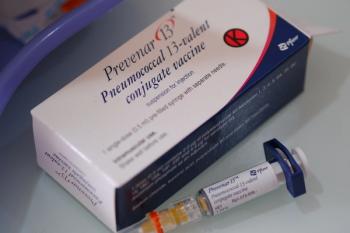
- Drug Topics October 2021
- Volume 165
- Issue 10
Immunization Information Systems: Beyond the Basics
Immunization Information Systems provide confidential, population-based, computerized database that records all immunization doses administered by participating providers within a geographic area.
The first population-based vaccine registry in the United States launched in Delaware in 1974 and did not begin to flourish until the Robert Wood Johnson Foundation launched their All Kids Count program in 1991. Government funding for immunization registries became available when President Bill Clinton included immunization registries in his Childhood Immunization Initiative in 1993.1
There are currently 63 registries, now called immunization information systems (IISs), in the United States. These include state-, island-, and city-based IISs, each operating independently under its respective local and state policies with their own rules around collection and use of data, analysis, and operational routines.2
What Is An ISS?
An ISS is a confidential, population-based, computerized database that records all immunization doses administered by participating providers within a geographic area. IISs provide a consolidated record of administered vaccines for the benefit of the patient, their family, and the greater public health. An IIS keeps a record of vaccinations given, dates, and manufacturing details, and can identify when a future or missed vaccination should be given.
IISs have many advantages; they can improve immunization rates, reduce vaccination errors, identify opportunities to vaccinate, provide epidemiological insights when there is a community outbreak of a vaccine-preventable disease, and allow access by patients, families, schools, and other health care providers.
An IIS can also reduce time spent entering data and track vaccine inventory, especially if it is connected through your electronic health record (EHR) system. An IIS can make a child’s immunization portable when the family changes practices, moves from one location to another, or seeks care outside the medical home.
How do IISs work?
The administering site is credentialed by the individual IIS under licensed providers who can designate access for data entry and/or viewing by staff. Access to view is allowed for the patient, parents, and specified agencies, such as schools, pharmacies, urgent care facilities, and hospitals.
There are federal requirements for documenting vaccines established by the CDC, which includes the specific vaccine, manufacturer, lot number, the date and location, and that the patient and/or family was given a vaccine information statement (VIS) to review with its publication date.3 Most systems will identify when a dose of a specific vaccine should be given and have specific time intervals that are not forgiven when a sequential dose is given too early.
It is the responsibility of the administering site to enter the required data, and it can be a burden to staff when they need to enter the data in multiple locations, such as the registry, the EHR, and the patient vaccination card. Most pediatric-specific EHRs are certified and connect with a local IIS, requiring only 1 point of data entry that will be shared with the IIS, the medical record, and the patient copy.
Are IISs effective?
There is significant evidence that IISs improve vaccination rates and reduce missed opportunities for administering immunizations. Australia implemented a national IIS in 1996 and demonstrated an increase in full immunization among 2-year-old children from 64% in 1997 to 93% in 2007.4 Australia has a national health care system that facilitates implementation and utilization of IISs. Although the United States has yet to implement a national IIS, studies have repeatedly demonstrated that
IISs improve vaccination rates, reduce missed opportunities for vaccinations, and facilitate responses to community outbreaks of diseases.1
The most significant problem with existing vaccine registries in the US is the lack of interoperability between them. Few nonpediatric-specific EHRs can currently extract data from local and state registries, or deposit immunization information directly into them. This necessitates office staff performing double entries of immunizations into the office EHR and the local IIS, which is time-consuming and unwieldly.
One method of speeding up data entry is the integration of barcode scanning into EHRs. After receiving a shipment of vaccine, the shipment form is scanned into a vaccine inventory, which is integrated into the EHR. When vaccines are ordered for a patient, the barcode on the vial is scanned again and screened by the connected IIS.
Warnings appear if the vaccine is being given too soon, is not age appropriate, is attributed to the wrong funding source (eg, Vaccines for Children Program), or has expired. The staff manually enters the other vaccine administration details into the EHR and the information is electronically sent to the appropriate IIS. Over the next few years, it is anticipated that a growing number of EHRs will have this capability.
The way forward
There is no uniform rule requiring an administering site to enter that data into the IIS, which further complicates the potential for interoperability. However, the COVID-19 pandemic and the CARES Act may be creating a new opportunity for data sharing between EHRs and the IISs.
All sites administering COVID-19 vaccines must report all vaccinations into a database that allows for capturing the event and providing reminders for a second dose as indicated by the vaccine given. It may open the opportunity to connect all vaccine registries into a national database, accessible from anywhere.
Articles in this issue
about 4 years ago
Can Technology Get in the Way of Patient-Centered Care?about 4 years ago
American Pharmacists Month: 4 Pharmacists Helping Their Communitiesabout 4 years ago
Diversifying Your Pharmacy’s Revenue Streamsabout 4 years ago
Biosimilar Update and the Pharmacist’s Role in Educationabout 4 years ago
Diversify Your Revenue Streamsabout 4 years ago
Shingrix Approved for Immunocompromised AdultsNewsletter
Pharmacy practice is always changing. Stay ahead of the curve with the Drug Topics newsletter and get the latest drug information, industry trends, and patient care tips.



































































































































